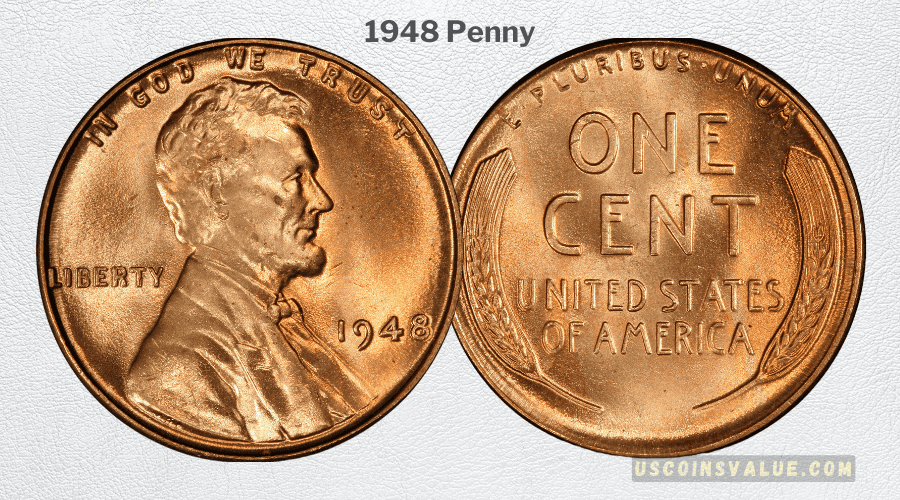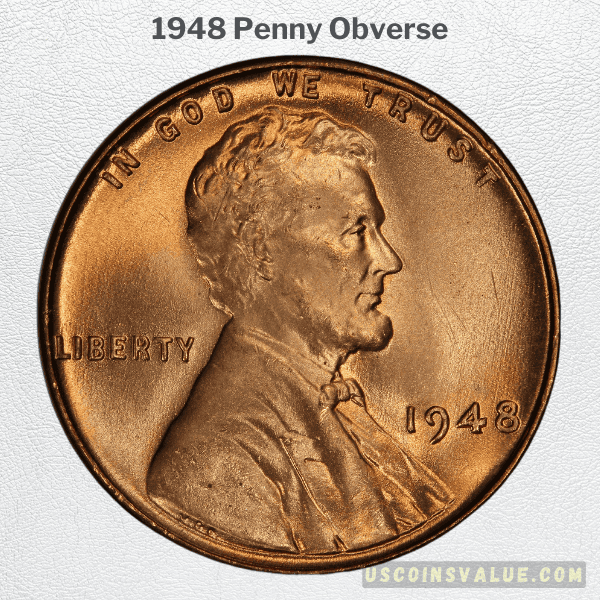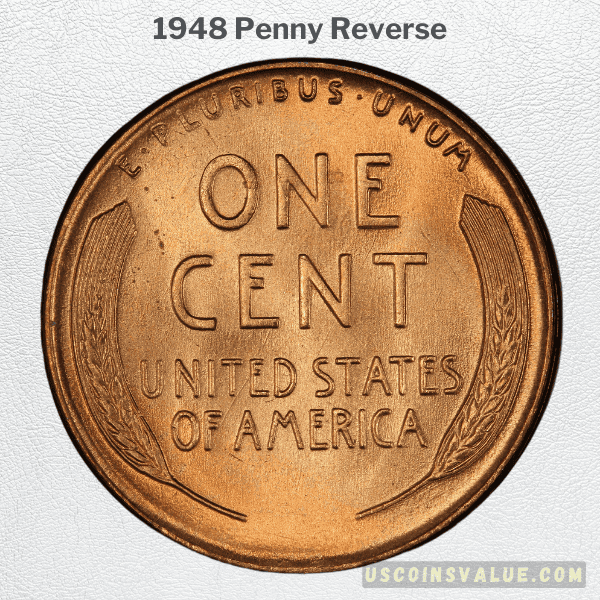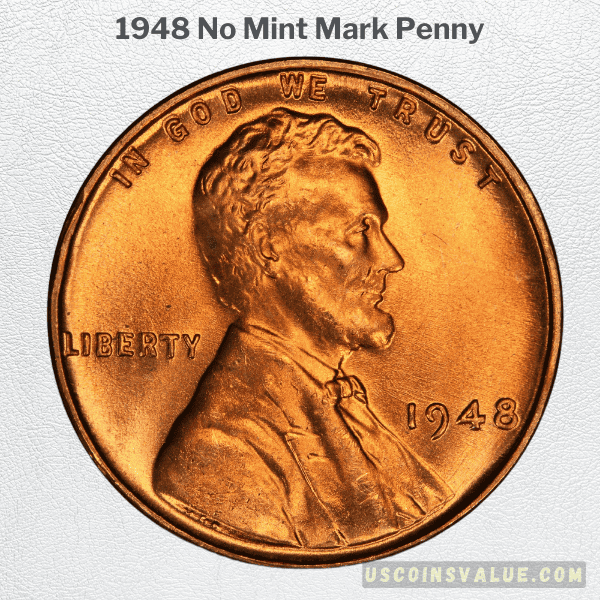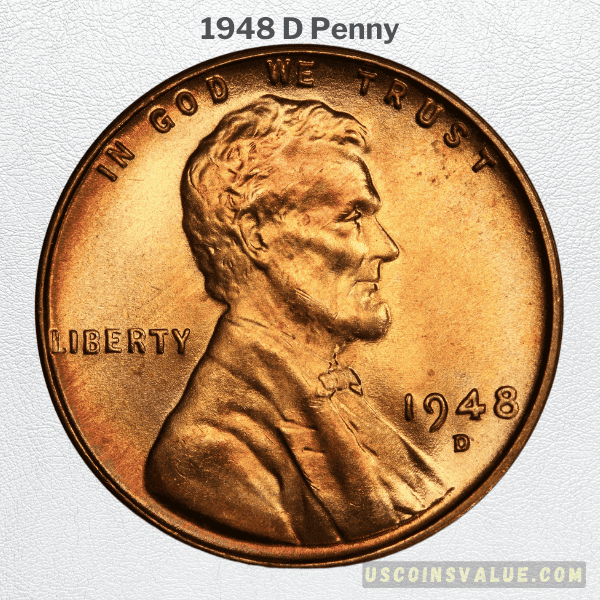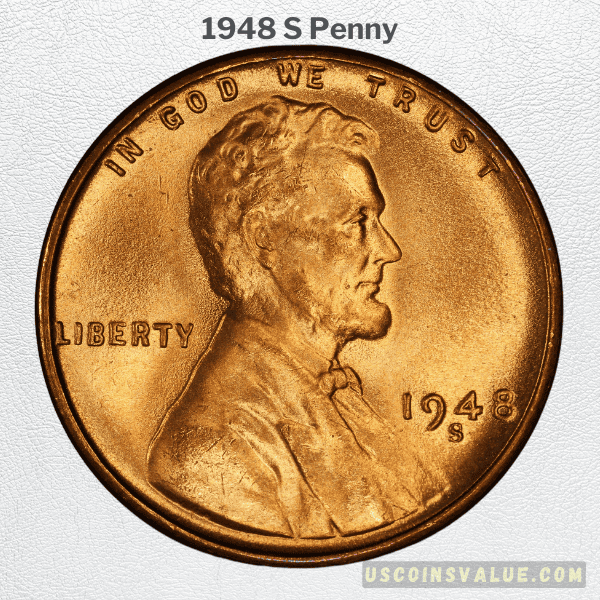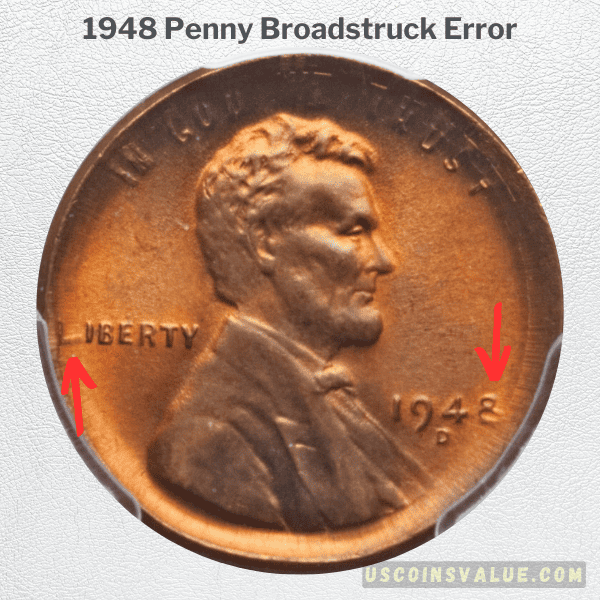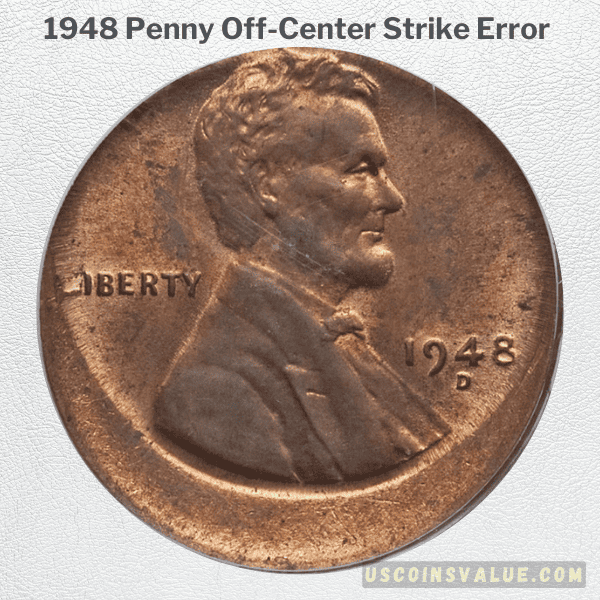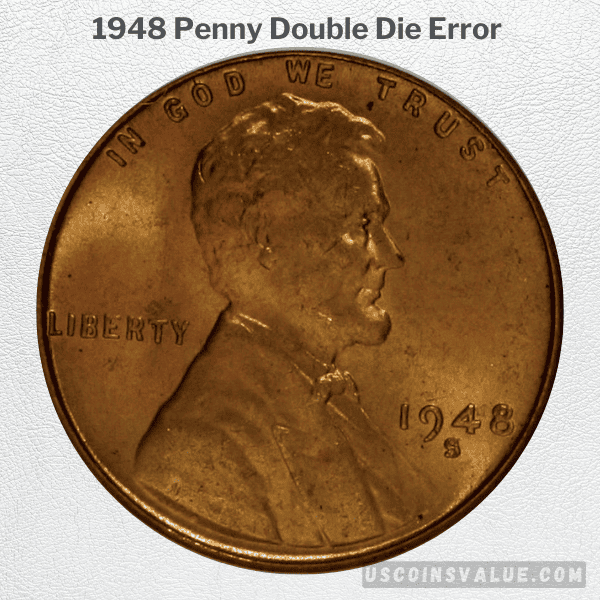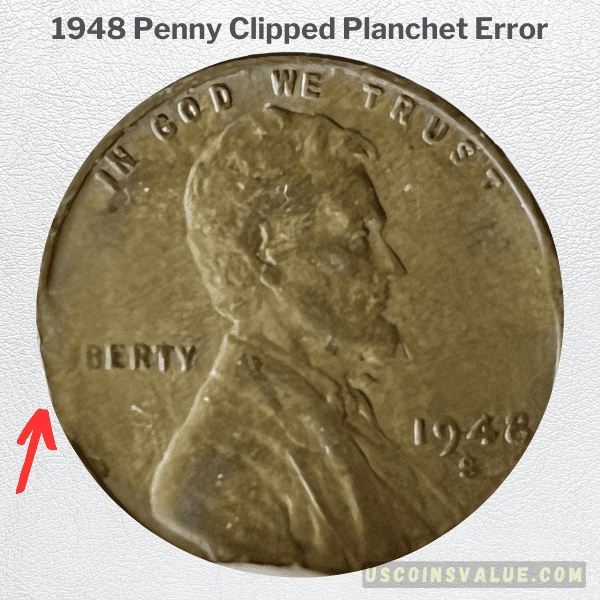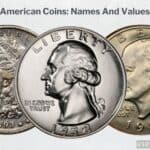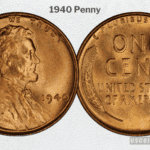Do you wonder why the 1948 wheat penny is one many coin enthusiasts cherish and long to add to their collection? Is the history surrounding the coin’s production, unique design or knowledge of error coins why it is highly coveted?
The answer is all of the above. The 1948 cents started the last decade of the wheat penny series, which ended in 1958.
An average condition 1948 wheat penny sells for $0.68 – $2.33. But an uncirculated high-grade coin is worth at least $150. This guide will help you identify valuable 1948 wheat pennies, including those with errors.
So let’s begin!
What is the Background of the 1948 Wheat Penny?
The Lincoln penny is one of the most popular US coin series with over a hundred years of existence, and there are two types. The 1948 wheat penny is part of the older version, with Lincoln’s face on the front and two wheat ears on the back.
Victor David Brenner designed the original Lincoln/Wheat penny for the one-cent coin in 1909. It lasted until 1958, when the country switched to the modern Memorial reverse design.
Brenner’s choice was a tribute to former US President Abraham Lincoln on the 100th anniversary of his birth. Because of the effects of the Second World War, the mintage facilities took a break from making proof coins in 1948.
Other features remained standard with the 1948 penny, including the composition that gave it three distinct colors. Check them out below.
The 1948 Wheat Penny Features
- Series: Lincoln Wheat
- Year of Make: 1948
- Mintage: 571,942,500
- Mint Branch: Philadelphia, Denver, San Francisco
- Composition: 95% Copper and 5% Zinc and Tin
- Weight: 3.11g
- Diameter: 19 mm
- Edge: Plain
What Does the 1948 Wheat Penny Look Like?
As part of the first Lincoln penny series, the 1948 one-cent coin has a Wheat reverse and Lincoln head obverse. The late president’s right side profile graces the front center and stops at his chest.
Other details on the obverse include:
- LIBERTY
- IN GOD WE TRUST
- 1948
- Mint Mark: “D” for Denver or “S” for San Francisco
On the reverse side, there’s a bold engraving of two wheat stalks forming half-rings on the other details. These details include:
- PLURIBUS.UNUM.
- ONE CENT
- UNITED STATES OF AMERICA
- Two Wheat Stalks
The combination of Lincoln’s head on the obverse and the wheat stalks on the reverse led to the coin’s popularity as the Lincoln/Wheat penny.
What are the 1948 Wheat Penny Varieties?
1948 Wheat pennies came in three standard regular strike varieties distinguished by their mint marks. Like many coins from 1948, the wheat penny doesn’t have proof coins or sets.
The highest mintage at 317,570,000 was the “no mint mark” penny from Philadelphia, followed by the Denver pennies at 172,637,500 and San Francisco with the least mintage at 81,735,000.
| 1948 (Lincoln/Wheat) Varieties | Mint Location | Mintage |
| “No Mint Mark” Regular Strike | Philadelphia | 317,570,000 |
| 1948-D | Denver | 172,637,500 |
| 1948-S | San Francisco | 81,735,000 |
All variants of the 1948 wheat pennies have the exact composition of 95% Copper and 5% Zinc and Tin. They’re also all the same weight and size with the same three colors. You will find the 1948 wheat penny in either Red (RD), Brown (BN), or Red-Brown (RB).
These colors determine the current value of each variant because they’ve affected the coins’ durability. Red (RD) 1948 wheat pennies have a shiny, earthy, burnt-orange tone. Despite wear and tear, they often have the most visible details, making them the most valuable tone.
Red-Brown (RB) are coins with red and brown patina. It could be brown in the field and red on the engravings. With the Brown (BN) color, you’d get a dull, sandy, bronze tone, which makes it the least valuable.
What’s the Current Value of the 1948 Wheat Penny?
A 1948 wheat penny’s value lies in its quality, which ranges from 0 (poor) to 70 (pristine). If you want to start a collection, targeting the Mint State (MS) coins is best. They’re uncirculated pieces that retain their original luster.
Mint State coins’ grading starts from 60 – 70, with the latter being the highest quality and value. With $2 – $3, you can buy an MS60 grade 1948 penny in any variant. There’s no record of MS68 – MS70 for this series, so that’ll be a rare goldmine if you ever find one.
Here’s a comprehensive list showing the current value for all 1948 wheat pennies graded MS60 – MS67.
| 1948 Penny MS Grades | 1948 No Mint Mark Penny | 1948-D Penny | 1948-S Penny |
| 60 | $2 | $3 | $2 |
| 61 | $3 | $3 | $3 |
| 62 | $4 | $5 | $4 |
| 63 | $5 – $6 | $6 – $8 | $5 – $6 |
| 64 | $18 – $20 | $12 – $15 | $12 – $15 |
| 65 | $32 – $45 | $28 – $32 | $22 – $24 |
| 66 | $140 – $350 | $40 – $135 | $30 – $50 |
| 67 | $2,350 – $5,000 | $750 – $1,700 | $150 – $1,050 |
You’ll notice that the “no mint mark” variant is the most valuable at its highest grades, so it holds the auction record of $10,350. The next best variant to collect is the 1948-D wheat penny, which has a $750 – $1,700 premium for an MS67 grade.
If you don’t have much money but desire a 1948 wheat penny in MS67, you should settle for a 1948-S variant. Keep reading to see the recent prices of 1948 wheat pennies and their auction records.
1948 “No Mint Mark” Wheat Penny
The “no mint mark” 1948 wheat penny value remains the highest over the years. Whether as recent as five to six years ago or as old as ten to eleven years ago, collectors had to pay premium dollars to own an MS67 grade of this variant.
Let’s look at the 1948 wheat penny from Philadelphia in resale value.
2023 has been a good sale year for “no mint mark” 1948 wheat pennies. Heritage Auctions sold some MS67 RD grades for $1,260, $1,500, and $1,560 in April. Although eBay sales are often low-priced, a seller made $1,380 in May for an MS67 RD “no mint mark” penny.
Last year, sales were also high at $1,020 – $2,640. The 1948 “no mint mark” wheat penny is the most valuable variety, as the data shows. The sales have been high every year going back to the early 2000s.
| Grade | Highest Price & Sale Date | Firm |
| MS67 | $10,350 (2012) | Heritage Auctions |
| MS67 | $10,281 (2012) | Heritage Auctions |
| MS67 | $9,775 (2005) | Heritage Auctions |
| MS67 | $8,225 (2014) | Heritage Auctions |
| MS67 | $8,050 (2006) | Bowers & Merena |
1948 D Wheat Penny
The 1948-D wheat penny recorded low sales this year from eBay to auction firms. The average price on eBay was between $15 – $41 for MS66RD grade and $450 – $525 for MS67 RD grades.
But last year, Heritage Auctions sold an MS67 RD 1948-D wheat penny for $1,020. 2012 was another good sales year with Stack’s Bowers selling an MS67 grade for $1,380 and an eBay trader earning $1,075 for the same grade.
The auction record for the 1948-D wheat penny variant is $3,000 by Heritage Auctions in 2022. Other high sales worldwide include:
| Grade | Highest Price & Sale Date | Firm |
| MS67+ RD | $3,000 (2022) | Heritage Auctions |
| MS67+ RD | $2,115 (2017) | Heritage Auctions |
| MS67+ RD | $1,935 (2019) | eBay |
| MS67+ RD | $1,880 (2016) | Heritage Auctions |
| MS67 | $2,070 (2005) | Heritage Auctions |
1948 S Wheat Penny
This year’s highest sale of a 1948-S penny was an MS67 RD piece by Heritage Auctions for $288. Meanwhile, eBay sales were cheaper, between $63 – $82 for MS67 grades and $20 – $42 for MS66.
2019 saw some of the highest sales and auctions for the 1948-S Wheat Penny. An MS67+ RD piece sold for $900 and another for $940. In 2020, Heritage Auctions sold a high-graded 1948-S Wheat penny for $1,020, the highest sale in six years since the auction record.
The auction record is almost ten years old by Heritage Auctions. The firm made $1,998 on an MS67 grade 1948-S Wheat penny.
Other high sales include:
| Grade | Highest Price & Sale Date | Firm |
| MS67 | $1,998 (2014) | Heritage Auctions |
| MS67+ RD | $1,175 (2016) | Heritage Auctions |
| MS67+ RD | $1,080 (2017) | Heritage Auctions |
| MS67+ RD | $1,073 (2018) | Legend Rare Coin Auctions |
| MS67+ RD | $1,058 (2019) | Legend Rare Coin Auctions |
Common Errors You’ll Find in 1948 Pennies
Minting plants couldn’t avoid the human factor in their manufacturing process, so some coins, including pennies, came out with errors. When this happened in the past, the facilities recalled the coins from circulation, but some never left the market.
They were useless then but have become rare and valued today. We’ll discuss general errors that are common with pennies. Then, we’ll share examples of 1948 wheat cents with those common errors and how much they sold for on the collectors market.
- Broadstruck Error
- Off-Center Strike Error
- Double Die Error
- Clipped Planchet Error
Broadstruck Error
A machine makes Coins from singular strikes on planchets (blank coins). The planchets sit inside a secure collar to ensure the strike hits the center. The blank surface shifts when the collar slacks, causing the strike to land outside the collar.
The result is a broadstruck error, which shows the coin’s details outside the standard diameter with all details intact. You can sell a broadstruck 1948 penny for almost $100, as proven by Heritage Auctions in 2021.
So, don’t be hasty in disposing of it because of the error. See the exact sale price below.
- Heritage Auctions sold a broadstruck red 1948-D Lincoln cent graded MS64 for $89 in 2021.
Off-Center Strike Error
The off-center strike is also a result of a slack retaining collar. The key difference between it and the broadstruck error is that you’ll get partial details. That means the engraving on the coin’s obverse and reverse will have some empty fields (backgrounds).
An off-center strike may be slight at 5%, barely noticeable, or extend as much as 90%. Because of the oddity of wide off-center strikes, they’re more valuable than the narrow ones.
Some recent sales of 1948 wheat pennies with off-center strikes include:
- In 2022, a 1948-D wheat cent graded AU55 with a wide 85% off-center strike sold for $336.
- Another 1948-D wheat penny with a small off-center strike of 20% graded MS63 sold for $109 in 2019.
Double Die Error
It takes a single-die application to get all the details on a coin during manufacturing. But when the die is faint, it’ll require multiple attempts to get a defined surface. That leads to the Double Die error, which could be on the obverse (DDO) or reverse (DDR).
A double die error causes the engravings to appear twice. It could be the bold Lincoln head on the obverse, wheat ears on the reverse, or other details. The DDO/DDR is one of the most popular rare errors amongst numismatics.
Here’s what you may spend to own one.
- A 1948-S wheat penny with DDO error graded at MS65 sold for $172 in 2008.
Clipped Planchet Error
Planchets are blanks made from metal sheets upon which a strike hits to become the coin you know and spend. When punching a metal sheet to create a planchet, parts of it could be clipped off.
As such, the produced coin came out with partial half-moon clips. The clipped planchet could be small, with only parts of the field cut off, or wide, with most details missing. Ensure you have a large clipped planchet to make money off this error.
Sadly for collectors, it’s been 25 years since any firm sold a clipped planchet 1948 wheat penny. It may be years before another one surfaces on the market.
- In 1998, Heritage Auctions sold a brown 1948 wheat penny in grade MS63 for $86.25.
Final Thoughts
The 1948 wheat penny series is a good place to start your coin collection as a novice because it’s mostly affordable. It also has a limited number of varieties, which makes it easy to identify. Remember, the “no mint mark” variant is the most valuable.
Besides identifying value by the mint marks, you can also target the red-colored 1948 pennies as they’re finer and most durable.
It’s best to trade with reputable firms like PCGS and Heritage Auctions to guarantee authenticity. But if you want to use eBay, ensure the coins get a professional grade.

